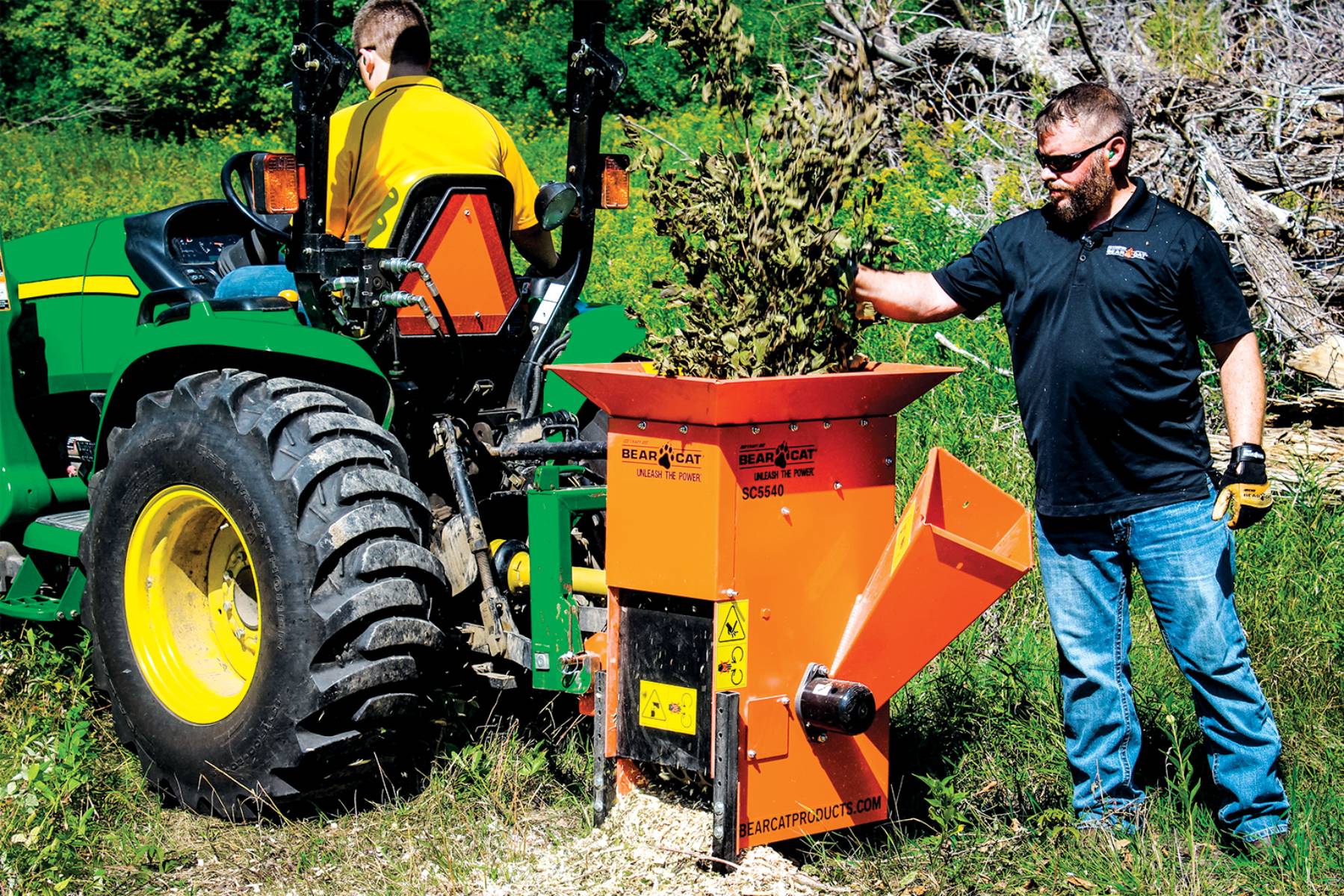
Next to feed, one of the most expensive aspects of keeping chickens is their bedding. So why not make your own from browse and branches around your property? A high-quality woodchipper is required to make wood chip bedding for chickens. Many people who purchase a woodchipper aren’t looking to sell woodchips but to clean up their property.
While many use woodchips for mulch, using them first as chicken bedding and then as mulch will reduce bedding costs and increase the nutrient value of the mulch. Keeping the fallen and cut branches on-site has positive environmental effects, such as reducing waste, improving the soil quality, and reducing methane emissions caused by landfills.
To fill a chicken coop with surplus tree material from your property, you’ll need a woodchipper with shredding capabilities. To learn more, we spoke to Jon Richardson, business development manager for Crary Industries. The company manufactures the Bear Cat woodchipper, one of many products you could use for this sustainable-themed task.
“The best way to go is to get a chipper with shredding capabilities,” Richardson explains. “For instance, our SC5540 is great if you have a tractor. It’s a PTO-driven machine, and you can chip up to 5-inch wood. And you can shred 3/4-inch and below. That’s what I think is important to this. It lets you use all of the material that’s being wasted and convert it into mulch for your chicken coop.”
A PTO is a power take-off device that transfers an engine’s mechanical power to another piece of equipment. Using this type of device reduces engine maintenance and increases uptime — the period the machine is actively operational.
“If you have one of the chipper shredders, the chipper is going to crank out your basic sized chips,” Richardson says. “The shredder comes with different sized screenings that range from fine all the way up to course, and even a size bigger than that.”
With the fine screen, you’ll get chips 3/8 of an inch, which is tiny. With the medium screen, the chips are 3/4 of an inch. The course size is 1-1/2-inches, and the bigger one, which is more for wet debris, produces big chunks. So, depending on your projects, you can use one machine to make more than bedding for chickens.
Chipping Hardwood vs Softwood
“As far as the sizing of the chips, it’s not going to matter what the wood is,” Richardson says. “When going from pine to oak, there’s more to consider than size; it’s just how hard the wood is and the ease in which the machine makes the chips. With the pine, it’s going to chip very easily. With the oak, it’s going to chip a lot harder.”
With Crary® Bear Cat® chippers, there’s no need to dry the wood. You can chip wet, dry, dead, and green wood. A lot of poultry enjoy scratching through the green, mulched leaves looking for insects and other tasty treats.
Woodchipper Maintenance
“As far as maintenance on the machine, the chipper blades will have to be sharpened or replaced,” Richardson says. While there’s no set time on that, it would directly correspond to how clean the wood you’re chipping is and how hard it is. “The dirtier and harder the wood is, the faster your knives will wear out.”
Regularly clean off your woodchipper. If using a pressure washer, avoid getting the electrical parts or engine wet. Grease your bearings to ensure the machine runs properly, and check the air filter if you’ve been using the machine a lot. A clogged air filter can cause your engine to overheat and reduce fuel efficiency.
Sawdust
Sawdust isn’t recommended for poultry, as it can cause respiratory problems. With a quality woodchipper, sawdust should be almost nonexistent. A good woodchipper should be flaking off pieces of wood from “shaving” size on up.
“For chicken runs, most people want bigger pieces,” Richardson says. “I see a lot of people using a deep litter method with their coops. They’re taking woodchips and turning them into some really good mulch. They’re keeping their chicken runs nice and clean and out of mud. It’s a win-win using chips in a chicken coop.”
Editorial Note: The best chicken bedding is dry, not damp, so as you find wood to chip, you may want to choose dry/dead wood as opposed to fresh green wood to decrease your moisture content. Either would be a fine choice for yards, but if you’re making bedding for the coop, make sure your wood is dry.
Originally published in the October/November 2024 issue of Backyard Poultry and regularly vetted for accuracy.
…
backyardpoultry.iamcountryside.com
Feed Name : Backyard Poultry
Coops,chicken coop bedding,chicken-bedding,coop bedding
hashtags : #Wood #Chipper #Coop #Bedding






Leave A Comment